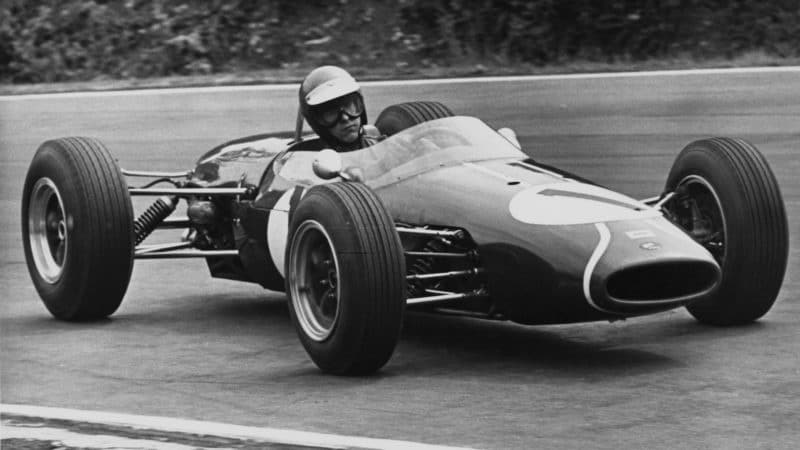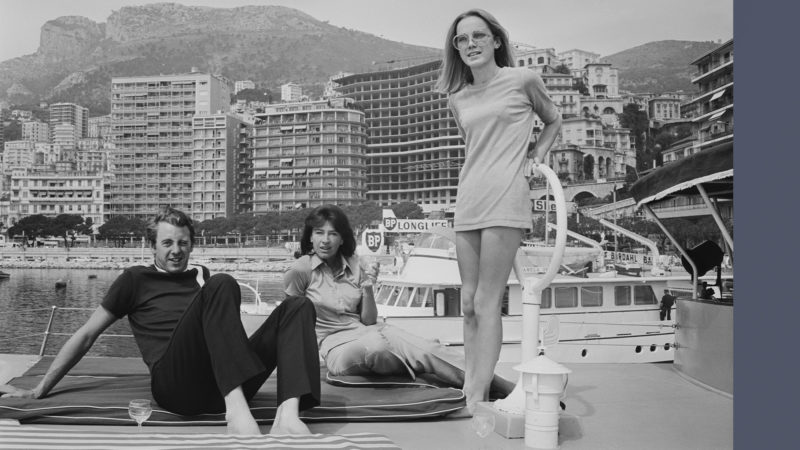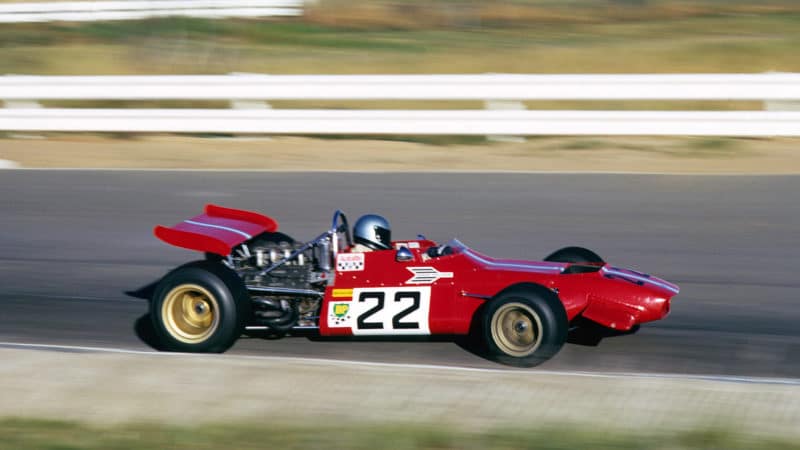Piers, indeed, came from a privileged background. The eldest son of the chairman of Courage Breweries, he knew nothing beyond vast wealth, until deciding one day to pursue a career in motor racing.
“Piers was desperately keen to succeed as a driver,” says Williams, “but his background rather worked against him. People assumed he could not be tough enough, and also that he had access to family money, which was not the case. He was like the rest of us broke.”
Courage began racing in 1963 with a Lotus 7, in which he proved quick, but somewhat erratic. An example of his laconic humour: “At Aintree, the motor-racing circuit runs parallel, in places, with the horse-racing circuit, and I sampled them both. Quite inadvertently, of course.”
The following year he decided to tackle F3, in the celebrated days of ‘the continental circus’.
“It was a very hand-to-mouth existence, I can tell you,” says Frank, “a matter of setting off to East Germany or Sicily or somewhere, towing the car behind his old Ford Zephyr. He used to crash fairly regularly in ’64, and you’d probably doubt me if I told you we used to try and straighten out the chassis by pushing it against a wall with another car! But we did.”
Courage admitted as much: “We had very little idea of how to set the cars up, and the technique was just to go as fast as you could for as long as the car held together. We were our own mechanics, and always arrived on the grid worn out and filthy.”

Courage’s Brabham BT10 at Brands Hatch in the F3 Challenge Trophy
Hulton Archive/Getty Images
For all that, Williams recalled that certain standards had to be kept up.
“Even when he was penniless, Piers was always very much the English gent. We’d share the driving, towing to and from the races, and he’d sleep on the back seat but always in his pyjamas! We’d stop on an autobahn at first light, and Piers would head off to the gents with his toothbrush, still in his pyjamas. The locals thought that strange, but I’m sure he never noticed.”
It would be easy to get the impression that Courage was a dilettante but, according to Frank, he was dedicated to his career.
“Piers may not have been a great test driver, but he was good at working with an engineer. In ’69, it was essentially just him and me, after all, and I relied on him almost totally for guidance.
“It was a lovely year, that, with a Brabham chassis, Cosworth engines, and Dunlop tyres. Given the relative paucity of opposition that season, you usually got points if you finished. We were second at Monaco, second at Watkins Glen, and so on.
“That year Piers really found himself as a racing driver. He’d done F1 before, with the Parnell BRMs, but it hadn’t worked out very well. For 1968, he suggested that we do F2 together, with a Brabham I had hanging around. He got his confidence back with that, and then we did F1 the following year.”

Sideways at Silverstone in 1969
Grand Prix Photo
Over the winter of 1967-68, Piers decided to put together a team for the Tasman Series, running an F2 McLaren, with loans from his father and bank manager. Usually, he was hard pressed to keep up with Jimmy Clark’s Lotus and Chris Amon’s Ferrari, but at Longford, a road circuit in Tasmania, appalling weather worked his way. The lithe McLaren, on Dunlop ‘wets’, was ideal for the task at hand.
Race morning was totally chaotic. The circuit at one point crossed over a wooden railway bridge, which was set afire by vandals, then put out. Then a downpour waterlogged the circuit, and the drivers began to debate the wisdom of starting the race at all at this, a track lethal even in perfect weather.
An added complication was that the race, if it were to go ahead, had to be over by a given time, because the track also went over a level crossing.
Racing was a lot of fun then, like being on a high all the time
Courage described it thus: “Even the most feckless racing driver is unwilling to compete with an express train travelling at right angles to himself This was the only time I have known the timing of a race to be governed by Bradshaw.” And he won the race, too, with Clark second.
For 1970, Williams reached agreement with de Tomaso to run a new Dallara-designed car and, of course, hoped Courage would drive it.
“These days, Formula One drivers are very … commercially-minded, but Piers didn’t view racing quite like that he wasn’t out to make as much as he could while he could.
“He got an offer from Ferrari, but he’d already agreed to drive for me, and never thought of going back on his word, although he well knew what Ferrari would do for his career. For the drivers of today it would have been no contest, I’m sure.
“The de Tomaso was terrible at first, but after the first race he sat down with Dallara, and it was a two-hour debrief, which was unheard of in those days. The second car was a huge improvement, and by midseason we were becoming competitive.”

‘Beautiful life’ of Courage and his wife Sally (standing) at Monaco in 1970
Hulton Archive/Getty Images
There was always a perception that Courage personified his name too much for his own good.
“Piers was very brave, certainly,” Frank agrees, “but very skilful, too. He wasn’t as good as Jochen whom I regard as the best there’s ever been but he was still very much a top driver by 1970.”
An unusual one, however.
“It seems to me that one of the advantages of a privileged education, like Piers had, is that, even if you’re not going to be a brilliant physicist or whatever, they try and instill into you the importance in life of history, literature, the world around you.






